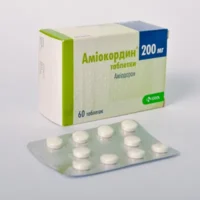Description
Spironolacton-Darnitsa (Spironolactone) Tablets 25 mg. №30
Ingredients:
- Each tablet contains 25 mg of spironolactone.
Dosage:
- The usual starting dose is 25 mg once daily, which can be adjusted as needed.
Indications:
- Spironolactone is indicated for the treatment of edema, hypertension, and conditions where aldosterone levels are high.
Contraindications:
- Do not use spironolactone if you have hyperkalemia, anuria, or are allergic to the drug.
Directions:
- Take this medication as prescribed by your healthcare provider. It is usually taken with food to prevent stomach upset.
Scientific Evidence:
- Spironolactone is a potassium-sparing diuretic that works by blocking the effects of aldosterone. It is also used off-label for conditions like acne and hirsutism in women. Studies have shown its effectiveness in reducing blood pressure and improving heart failure outcomes.
Additional Information:
- It is important to monitor potassium levels while taking spironolactone, as it can cause hyperkalemia. This medication may interact with other drugs, so inform your doctor about all medications you are taking. If you experience any side effects, contact your healthcare provider immediately.
Comparison to Alternatives:
- Spironolactone has been compared to other diuretics and shown to be effective in certain patient populations, especially those with heart failure. It is considered a cornerstone in the management of heart failure with reduced ejection fraction.




